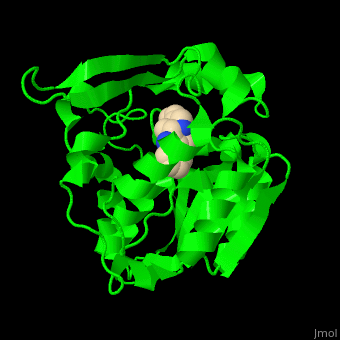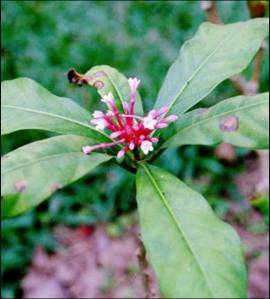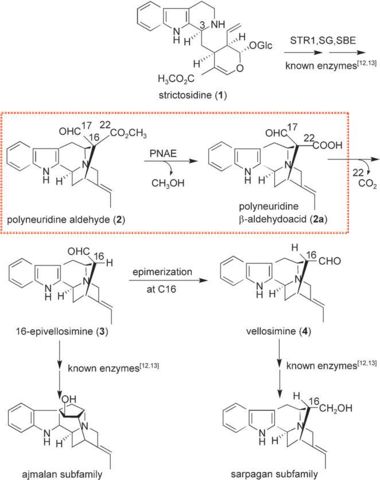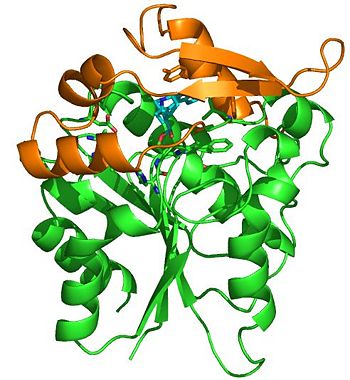Plant species that contain alkaloids have been used in traditional medicines for many centuries. Since the identification of the first alkaloid, morphine from Papaver somniferum in 1806, about 20000 alkaloids have been isolated and their structures elucidated. Among these compounds the indole alkaloids are of particular interest due to their rich biological active constitutents which are used as therapeutic agents in various medicines, for example quinine, vincristine and ajmaline. The latter can be isolated from the Indian medicinal plant Rauwolfia serpentina (L.) Benth ex Kurz.
Up to now the phytochemical analysis of Rauvolfia in vitro systems resulted in the isolation of more than 30 monoterpenoid indole alkaloids. Many of them belong to the well known ajmalan-sarpagan type alkaloids. One of the most intriguing alkaloid was ajmaline, a compound comprising a complex hexacyclic ring system bearing nine chiral carbon centers.
'Polyneuridine Aldehyde Esterase'(PNAE) is an important enzyme during Ajmaline Biosynthesis, transforming C-10 skeleton polyneuridine aldehyde into C-9 skeleton epi-vellosimine[1].
For the biochemical characterization of PNAE, the enzyme was isolated from plant cell cultures of the Indian medicinal plant Rauvolfia serpentina and partially sequenced; the PNAE cDNA was then cloned and overexpressed in Escherichia coli.
PNAE showed extremely high specificity for its natural substrate polyneuridine aldehyde, out of 14 alkaloidal and aromatic esters only polyneuridine aldehyde and its ethylester were processed.
Sequence analysis led to the preliminary classification of PNAE as a new candidate of the large α/β hydrolase superfamily. This classification is based in particular on the catalytic triad Ser87, Asp216, and His244, which was previously verified by single mutations and homology modeling.
The structural data now available for PNAE support the overall mechanism, which undoubtedly represents the key reaction for the biosynthesis of C9-monoterpenoid Rauvolfia alkaloids. The data will also allow a rational, structure-based redesign of PNAE, similar what we have recently demonstrated for the Pictet-Spenglerase, strictosidine synthase, which is now applied for chemoenzymatic synthesis of novel alkaloid libraries.
Because the cap domain and the architecture of the binding pocket of PNAE determines its exceptional high substrate specificity, future systematic structure-based, second-sphere, and random mutations should give PNAE mutants with altered, especially low, substrate specificity. Such enzymes then could be useful multipurpose catalysts for generation of novel alkaloid structures for biological screening.
Structural highlights
PNAE overall structure is of an α/β hydrolase. contains the and the [2]. Water molecules are shown as red spheres.




